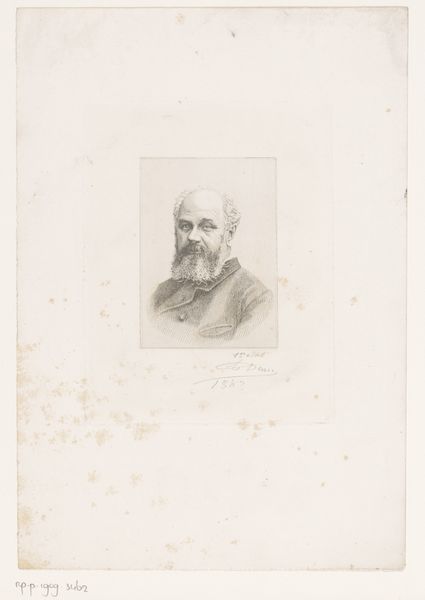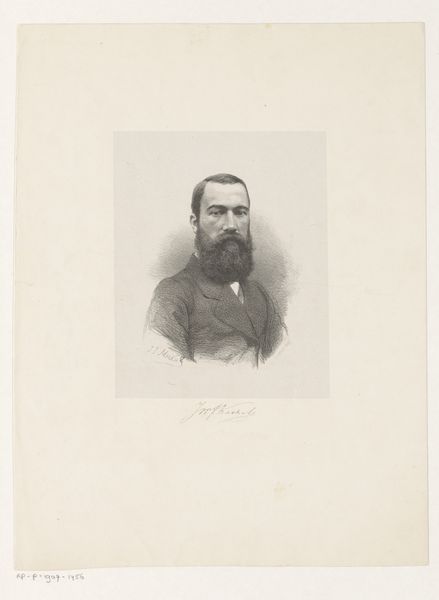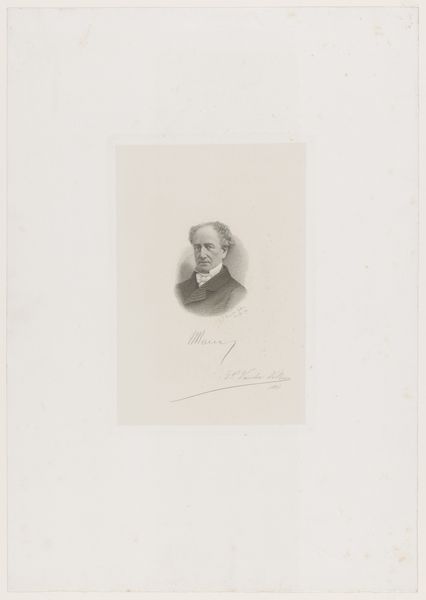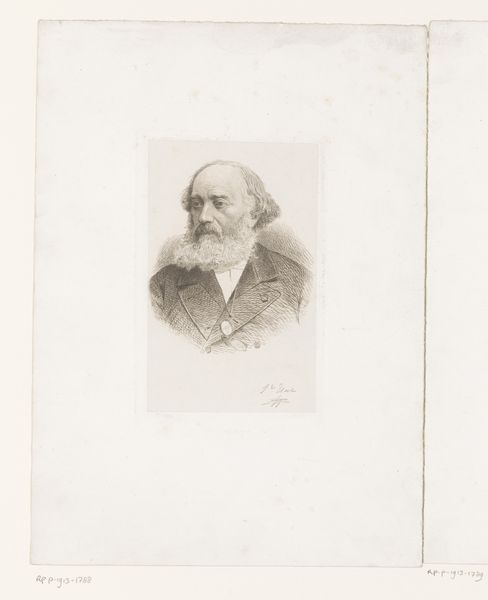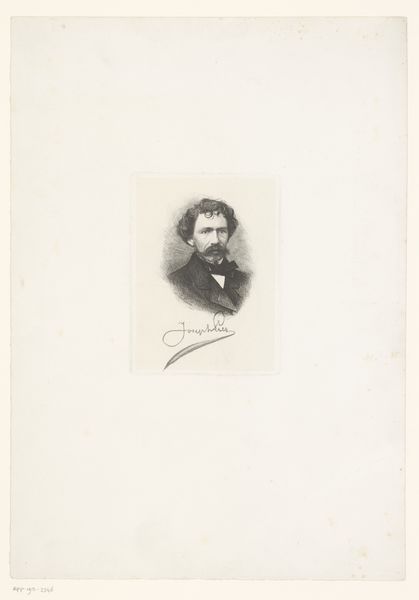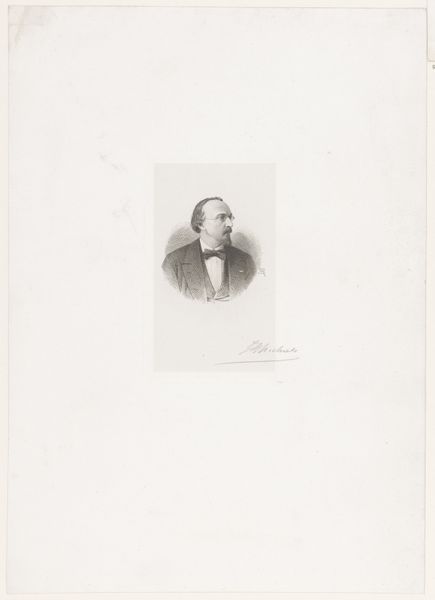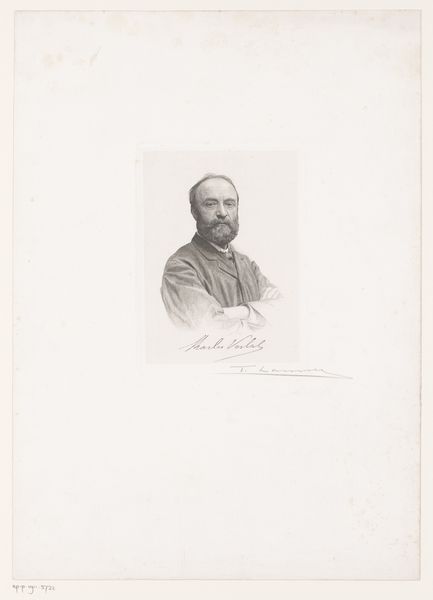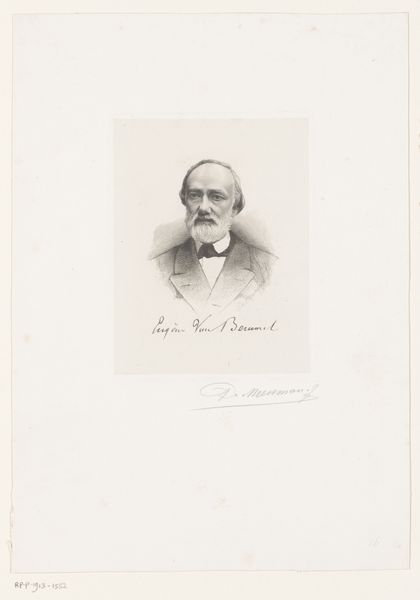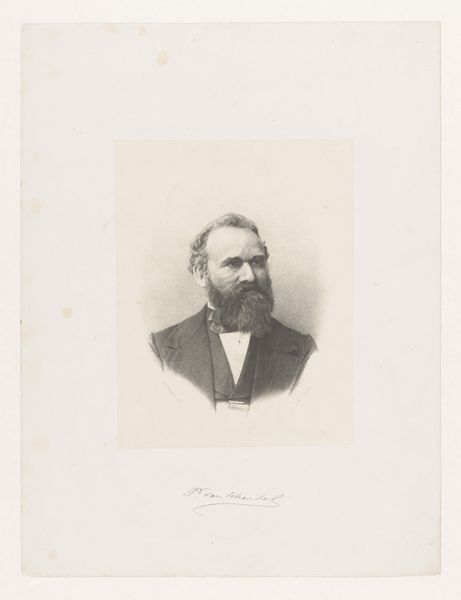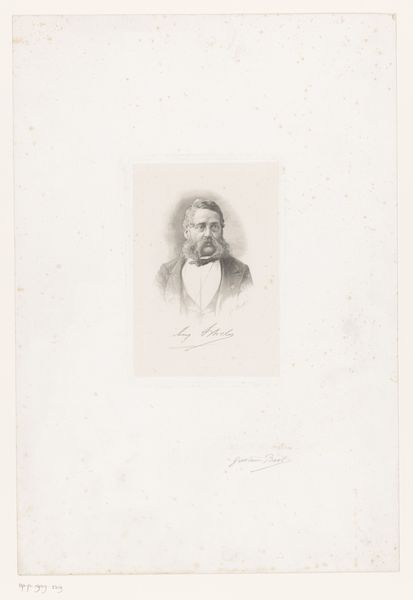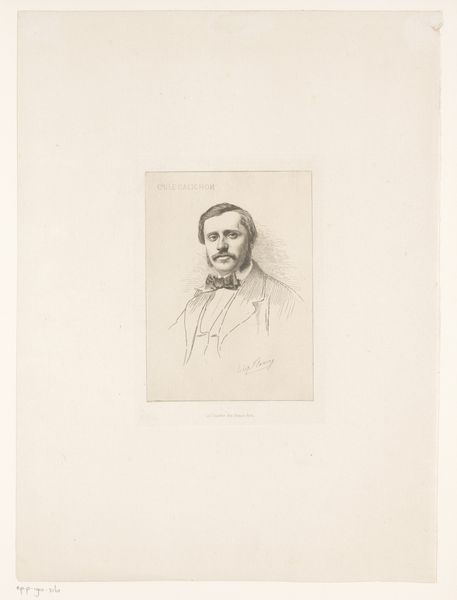
drawing, graphite
#
portrait
#
drawing
#
graphite
#
academic-art
#
realism
Dimensions: height 210 mm, width 158 mm
Copyright: Rijks Museum: Open Domain
Curator: Here we have a graphite drawing dating back to 1891, titled "Portret van Johan Alfried de Laet" by Willem Philip van der Veken. Editor: At first glance, I’m struck by its…contained quality. It feels rather formal and self-conscious, a product of its time perhaps. Curator: Absolutely. The academic art style shines through. Notice the intense, almost meticulous, use of graphite to build tone and texture, especially around the face and beard. Editor: The formalist in me wants to unpack that gaze, right through us. It commands respect. And I see, technically, how the hatching and cross-hatching define the volumes. There’s an undeniable sense of presence. Curator: As an historian, I see it as an intriguing window into the era’s social values. A portrait like this would likely have been commissioned to project status and intellectual prowess. Johan Alfried de Laet clearly was a man of some standing. Editor: Observe, too, the very controlled and relatively small scale of the drawing. It invites a kind of intimate contemplation. We get the feeling he must be regarded with great respect, and so is being depicted with dignity and precision, too. Curator: Precisely. The realism suggests a desire for accurate representation, but that accuracy serves a social purpose—affirming his position in society. It speaks to how visual representation was entwined with power. Editor: Thinking about it now, though, its subdued tonality and the soft graduation of values lends it a touch of melancholy. It is beautifully crafted in order to portray such status but almost subdued when looking at the man within, maybe there's a touch of regret captured. Curator: Yes, the piece creates a sense of dignified sobriety, doesn't it? An intimate glimpse filtered through a formal lens of the time. Editor: Well, I found myself drawn into what makes this drawing stand out when just paying attention to composition and material to better see the impact and statement. Curator: Understanding these constraints only deepens one's insights and respect to the art piece, wouldn't you agree?
Comments
No comments
Be the first to comment and join the conversation on the ultimate creative platform.
